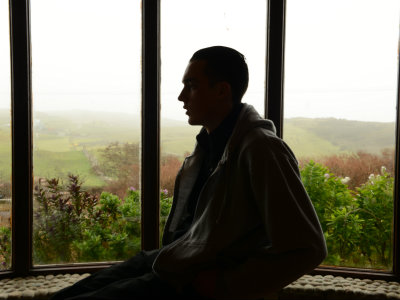
by Mark Brown, @markoneinfour
When we think about mental health we often think about services. We think about buildings. We think about staffing. We think about resources and pledges and concordats. If we work for services we think about our service users; their care packages; their needs assessments.
A Day in the Life, a year long project that I’m running supported with funding from Public Health England, is trying to change that. It’s a project trying to capture a snapshot of what everyday life is like for people who experience mental health difficulties in England.
On four days across the year we’re asking people who experience mental health difficulties to do something really simple: we’re just asking them to write about how their day was; what made their mental health better and what made their mental health worse. Once people have written up this diary entry and upload it to our website it’s published along with everyone else’s days. Together, these days present a picture of life with mental health difficulty in all of its amazing, boring, heartbreaking, funny, tragic glory.
The third day we’re asking people to write about is Sunday May 10th 2015 – that’s this Sunday. On our first day in November 2014 over 350 people wrote about what their day was like. On our second in February 2015 190 people shared what that everyday day was like for them. All together people have shared with us over 275,000 words detailing what life is like for them balancing mental health difficulty with the mundane world of normal life. In our first two days people wrote about everything from getting the kids ready for school to preparing for a Mental Health Act Tribunal.
This stuff is left out of policy
The everyday life of people with mental health difficulties is often left out of the development of policy and practice. Often the decision to design a service or to develop a method of working is derived from research evidence and ‘best practice’. The problem with this is that it often leaves out what people’s lives are actually like from the thinking. While this has always been problematic, it’s now something that is more difficult to ignore.
While we happily campaign for a reduction of stigma based on stereotypes of people who experience mental health difficulties we are sometimes blind to the way that these stereotypes still shape our service design and delivery assumptions. What life is like for people with mental health difficulties has diverged from the assumptions made in the way we approach providing things that will make that life easier.
Building a rich picture
When people write about an ordinary day for them and contribute to A Day in the Life they help us build a rich picture of what life is like. There’s a saying in design circles that you should start from what people need and then look for data. As our store of normal days grows, we’ll be able to find areas where people have difficulties than haven’t been apparent before.
This will help guide further research into the problems that people with mental health difficulties actually have, rather than how well the services we have allowed to develop over decades are ‘performing’. Already, it’s clear from our first two days that one of the most mentioned areas of life that people have problems with is poor, disrupted or otherwise unsatisfactory sleep. As we analyse our store of rich, detailed, everyday experience we’ll find other areas where people have real difficulties in their lives but which we’ve never structured our services to meet.
The next A Day in the Life Day is Sunday May 10th. If you experience mental health difficulties sign up and join in. If you don’t, come and read and join us, people with mental health difficulties, as we get through another average day.
What everyday life is like living with a mental health difficulty is something that we often don’t get round to wondering about unless it comes into the work we do with people. We rarely wonder: what are people’s lives really like when they aren’t being caught in the torch beam of the service we’re trying to provide for them?
If we work in a field where we work with people, like me, who experience mental health difficulties our goal is to make life with mental health difficulties better. How can we expect to do that when we don’t really know much about what that life is like?


 Bournemouth, Christchurch and Poole
Bournemouth, Christchurch and Poole  Hampshire County Council
Hampshire County Council  Lincolnshire County Council
Lincolnshire County Council  Norfolk County Council
Norfolk County Council  Northamptonshire Children’s Trust
Northamptonshire Children’s Trust  South Gloucestershire Council
South Gloucestershire Council  Wiltshire Council
Wiltshire Council  Wokingham Borough Council
Wokingham Borough Council  Children and young people with SEND are ‘valued and prioritised’ in Wiltshire, find inspectors
Children and young people with SEND are ‘valued and prioritised’ in Wiltshire, find inspectors  How specialist refugee teams benefit young people and social workers
How specialist refugee teams benefit young people and social workers  Podcast: returning to social work after becoming a first-time parent
Podcast: returning to social work after becoming a first-time parent  Podcast: would you work for an inadequate-rated service?
Podcast: would you work for an inadequate-rated service?  Family help: one local authority’s experience of the model
Family help: one local authority’s experience of the model  Workforce Insights – showcasing a selection of the sector’s top recruiters
Workforce Insights – showcasing a selection of the sector’s top recruiters 

 Facebook
Facebook X
X LinkedIn
LinkedIn Instagram
Instagram
Comments are closed.